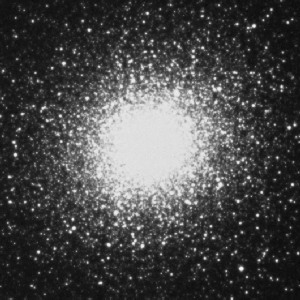The globular cluster M13 in the constellation Hercules
Click on image for full size
the Space Telescope Science Institute and NASA
Globular Clusters
If you think that this globular cluster looks like a very round
elliptical galaxy, you would
be right! Elliptical galaxies and globular clusters have a lot in
common. There is no gas or dust in a globular cluster, and the stars
are old. In fact, some evidence suggests that globular clusters were
the first objects to form.
The big difference is size! Globular clusters contain hundreds of
thousands or millions of stars. Elliptical galaxies can contain
hundreds of billions of stars! And while elliptical galaxies are
sometimes round, globular clusters are never elliptical.
Globular clusters are found both in spiral galaxies and elliptical
galaxies. The Milky Way,
for example, has over one hundred globular clusters throughout it's
halo.
You might also be interested in:

How did life evolve on Earth? The answer to this question can help us understand our past and prepare for our future. Although evolution provides credible and reliable answers, polls show that many people turn away from science, seeking other explanations with which they are more comfortable.
...more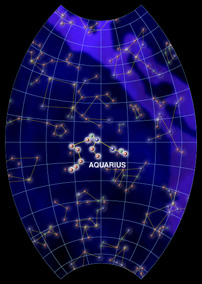
Aquarius is a member of the Zodiac, a group of constellations that the Sun travels through each year. It is best viewed in autumn in the southern sky, although much of the northern hemisphere can see
...more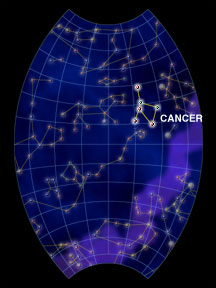
Cancer, the Crab, is a member of the Zodiac, a group of constellations that the Sun travels through each year. Cancer spends half of the year in the sky. It first rises in December and is visible through
...more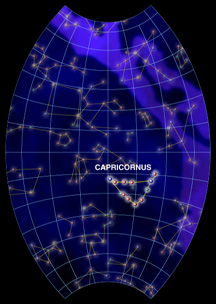
The constellation Capricornus represents the figure of either a goat or a sea-goat in the sky. It is believed to be the oldest constellation known. Capricornus is also a member of the Zodiac, a special
...more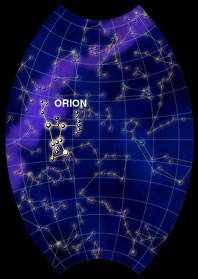
Orion, the Hunter, is by far the most famous seasonal constellation. No other is more distinguishable or bright as this northern winter constellation. The famous Orion's Belt makes the hunter easy to
...more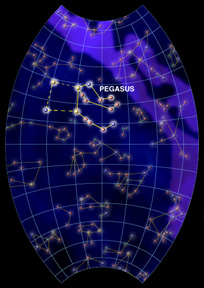
The constellation Pegasus represents the white, winged horse of Greek mythology. This beautiful figure can be seen high in the sky starting near the end of summer and continuing through autumn if you live
...more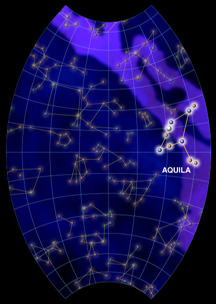
Aquila, the celestial eagle, is one of the three constellations which have bright stars forming the Summer Triangle. A nearly perfectly straight line of three stars symbolizes part of the wings. The center
...more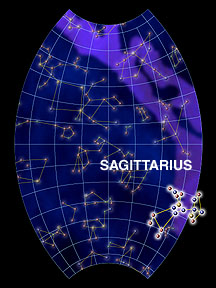
Sagittarius is a centaur, with the torso of a man atop the body of a horse. Unlike the wise and peaceful centaur Chiron (Centaurus), Sagittarius is aiming his giant bow at his neighbor, Scorpius. While
...more


